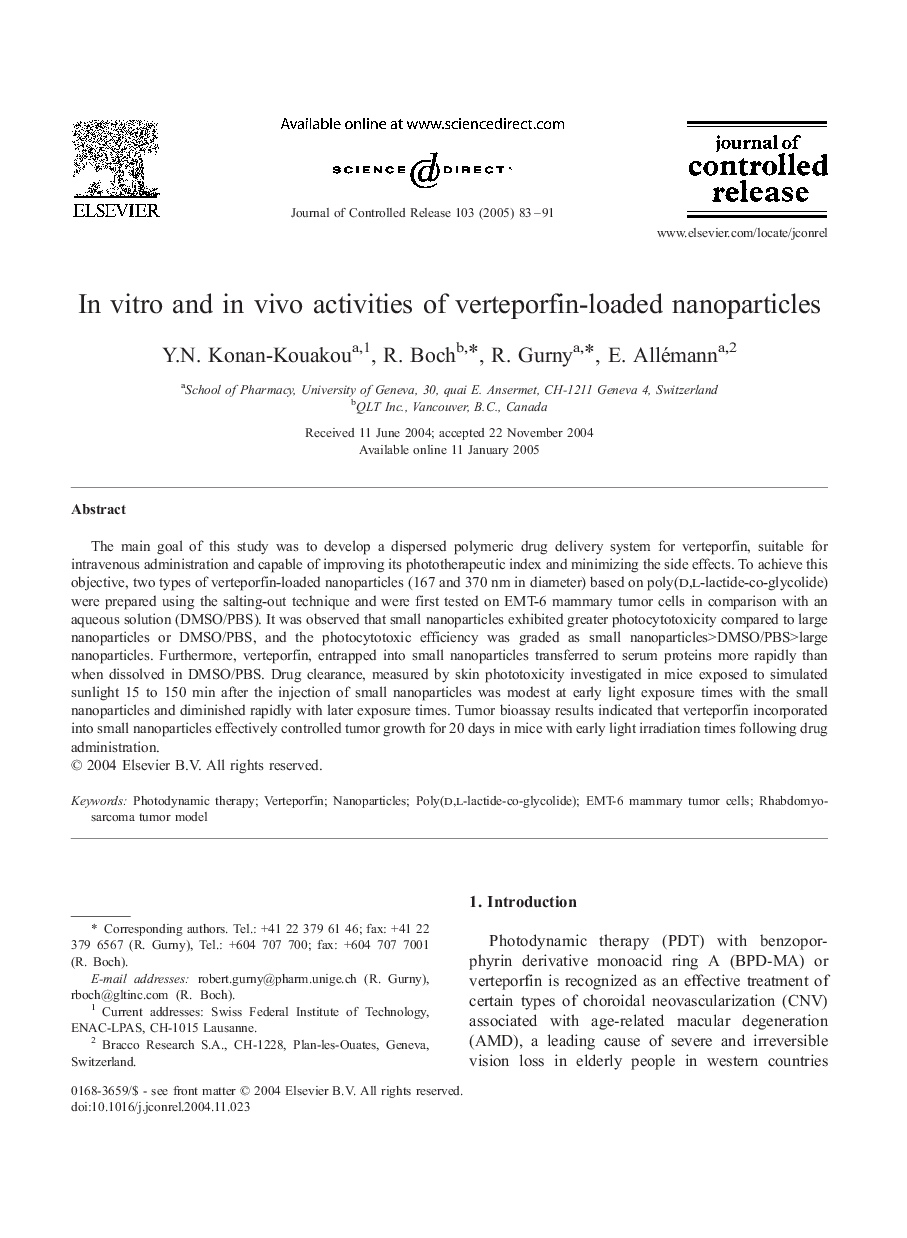| Article ID | Journal | Published Year | Pages | File Type |
|---|---|---|---|---|
| 10613368 | Journal of Controlled Release | 2005 | 9 Pages |
Abstract
The main goal of this study was to develop a dispersed polymeric drug delivery system for verteporfin, suitable for intravenous administration and capable of improving its phototherapeutic index and minimizing the side effects. To achieve this objective, two types of verteporfin-loaded nanoparticles (167 and 370 nm in diameter) based on poly(d,l-lactide-co-glycolide) were prepared using the salting-out technique and were first tested on EMT-6 mammary tumor cells in comparison with an aqueous solution (DMSO/PBS). It was observed that small nanoparticles exhibited greater photocytotoxicity compared to large nanoparticles or DMSO/PBS, and the photocytotoxic efficiency was graded as small nanoparticles>DMSO/PBS>large nanoparticles. Furthermore, verteporfin, entrapped into small nanoparticles transferred to serum proteins more rapidly than when dissolved in DMSO/PBS. Drug clearance, measured by skin phototoxicity investigated in mice exposed to simulated sunlight 15 to 150 min after the injection of small nanoparticles was modest at early light exposure times with the small nanoparticles and diminished rapidly with later exposure times. Tumor bioassay results indicated that verteporfin incorporated into small nanoparticles effectively controlled tumor growth for 20 days in mice with early light irradiation times following drug administration.
Related Topics
Physical Sciences and Engineering
Materials Science
Biomaterials
Authors
Y.N. Konan-Kouakou, R. Boch, R. Gurny, E. Allémann,
